For new converts to the backcountry world let me implore you to consider Fritschi’s Tecton as your binding of choice for cranking turns in and out of bounds. It IS the binding you’re looking for, but it doesn’t look like it because, well, you’re not yet ready to believe it because it’s a tech binding with a 2-pin connection at the toe.
So take a moment, close your eyes and consider what it offers – lateral release at the toe with an alpine heel that holds your boot down like you’re used to. Plus, that 2-pin toe means Dynafit caliber touring efficiency and, get this, you don’t need to exit the binding to switch modes like you do with CAST style alpine bindings (Salomon’s Shift or Marker’s Duke PT).
Fritschi’s 2-pin technology
The key to Tecton’s appeal is based largely on their unique 2-pin toe that provides lateral release. With the exception of ATK’s TR2, no other low-tech toe provides true lateral release. They all have varying degrees and methods of retention to prevent premature release, a common problem among 2-pin toes, but Fritschi is unique in how they address this problem.
The tendency for low-tech toes to pre-release is rooted in their mechanical configuration; a pair of “arms” that pivot about the “elbow” causing the pins to clamp tight on coned inserts in a boot. The pivoting arms cause the two pins to move along an arc that is largely horizontal – moving in or out – but it also has a vertical component that is affected by vibration while skiing. If the vibrational forces are high enough, they will cause the base of the arm to move up, resulting in the “arms” opening and the boot releasing.
Fritschi’s 2-pin toe system slides horizontally, thus eliminating the vertical component and the tendency for pre-release. In the case of the Tecton (and Vipec) the pins can slide left or right 11 millimeters before one side will cam open to release the boot. This system yields unheard of elasticity for a tech binding, plus the feature all alpine skiers desire, lateral release at the toe.
You may have heard Fritschi toes are a bit finicky to get in to – that’s an outdated review that I started and has been addressed for over four years. In the current configuration Fritschi toes are arguably as easy to get into as G3’s Ion, the reigning king of easy entry for tech toes, and far less fiddly than any Dynafiddle toe you might be considering.
Fritschi toes offer another benefit that few other tech toes offer – a calibrated release when your heel releases vertically. With most tech toes if the heel comes up the toes may or may not release. If there is no lateral twist, odds are they won’t. Fritschi, on the other hand, has a bumper on the toe lever which is designed to connect with the front of an AT boot so that it will force the pins open when the skier’s knee is rotated approximately 60 degrees forward — before your knee touches the ski or ground. With most tech bindings a vertical release might cause the boot to still be connected at the toe which could result in an injury despite a partial binding release. This is less likely with any Fritschi pintech binding — Vipec, Xenic, or Tecton.
Touring Performance
The 2-pin tech toe is the foundation for Dynafit caliber touring efficiency. The only significant compromise to that is the weight of Tecton’s heel. Compared to a plate binding this is negligible, and while it is more than a lightweight AT tech binding, it only adds a few ounces of drag weight – a small price to pay for alpine caliber downhill confidence and security. Because the toe mechanism is so different from classic low-tech toes lifting the toe lever doesn’t lock out release when skinning, it merely increases the release value. Since there is no vertical component to the pin release function the extra resistance tends to be solid enough to hold on, even when stomping. And in the case where you’re stomping to maintain purchase on an icy skin track, um, that’s when you should be using those optional crampons you didn’t bother to buy, or remember put in your pack. Just sayin’.
To switch to tour mode without exiting the binding push the heel unit flat, which frees the heel, then pull the spring housing upright. It’s a fairly powerful spring so moving the heel unit with your ski pole will take some practice and effort, but it is possible. With the heel spring cocked upright stomp with your heel to retract the brakes. Once the brakes are out of the way you can tour with zero heel lift, or by sequentially flipping the two climbing posts forward, climb with a 7° or 13° post.
To return to turn mode, flip the climbing posts back, then push the heel spring flat to step in and lock the heel for powerful alpine turns.
Da Heel
If there is one thing reminiscent of a beefy alpine binding it is the heel unit of Tecton. It isn’t quite as hard to step in to as a Marker Kingpin, nor is it as easy as a classic pin binding, ‘cuz it isn’t. Unlike the Kingpin that provides vertical and lateral release at the heel, Tecton holds your heel down with a reassuring firmness and lets go as needed in the vertical plane only like a classic alpine resort binding.
Because the heel of your boot is firmly held down by the Tecton heel unit it doesn’t switch between uphill and downhill modes quite as easily as Fritschi’s Vipec does. However, unlike competitive options, you don’t need to exit Tecton to switch from a locked to a free heel. Admittedly the need for this is limited to times when you want a free heel to cross a flat zone between downhill pitches. Otherwise, the switch from to turn to tour usually is done to add skins, something most of us do with skis off. By comparison, bindings like Kingpin, Duke PT, or the Shift require you to step out of the bindings to change modes, period.
Downhill Mode
This is the reason alpine converts should be interested in Tecton. Although the connection at the toe is different than a traditional alpine binding, the 2-pin connection has the potential to provide even better edging power. More obvious is the fact that the boot is held securely at the heel, not just by downward pressure from the heel unit, but by making sure there is pressure between the top and bottom of the boots heel shelf. In addition, there are two grooves in the heel that mate with the slots cut in the tech heel of the boot, increasing the tightness of the heel connection beyond what a mere alpine binding provides.
Conclusion
If you’re coming from the resorts and venturing into the backcountry Fritschi’s Tecton may be more commitment than you’re ready to make. Bindings like the Shift or Duke PT look more like what you want because they keep the alpine toe you’re familiar with. In the backcountry these new hybrid bindings are a compromise due to excess weight and the need to step out of the binding to switch modes. If you’re a hiker at heart, like the climb of mountain biking, or any other human powered sport, save yourself the cost of stepping gingerly into the backcountry and get the Tecton. It isn’t as lightweight as classic pin bindings like Vipec or Xenic, but it’s lighter than any plate binding, or hybrid touring binding and it has the sort of heel retention you’re looking for, even if only to mollify your skeptical mind. Once you’ve experienced the depth of turns well earned you’ll be glad you opted for a tech binding that works as well in bounds as out. That’s Tecton in a nutshell. If you don’t believe me, I’ll tell you now so you know I told you so for the future; by the time you’re hooked on the backcountry you’ll have bought two bindings instead of only this one. Why pay more than you have to?
Fritschi
Tecton
MSRP: $650
Weight/binding: 1 lb., 3½ oz. (550 g)
Release values: DIN 5-12 (toe & heel)
Brake widths (mm): 80 / 90 / 100 / 110 / 120 (80 g)
Crampon widths(mm): 80 / 90 / 100 / 110 / 120
© 2020

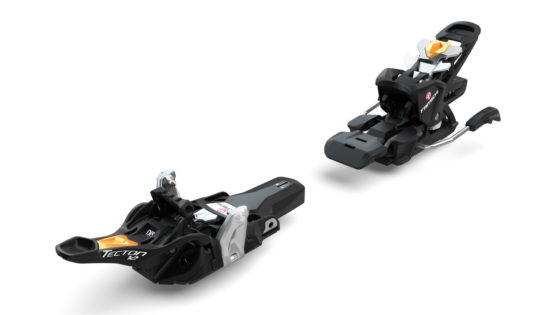
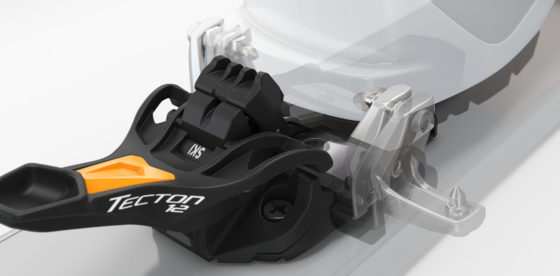
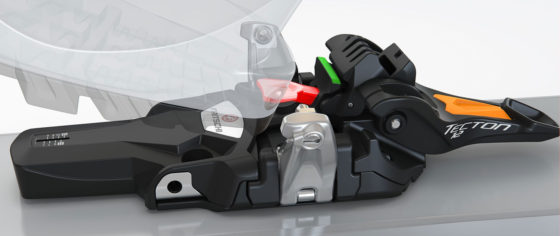
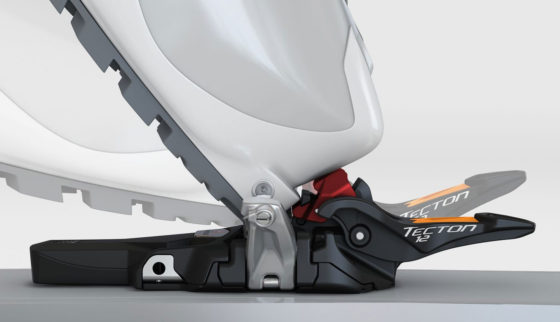
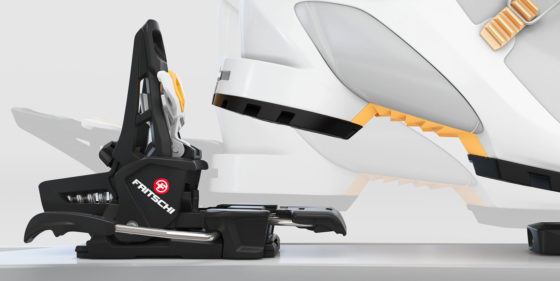
Recent Comments